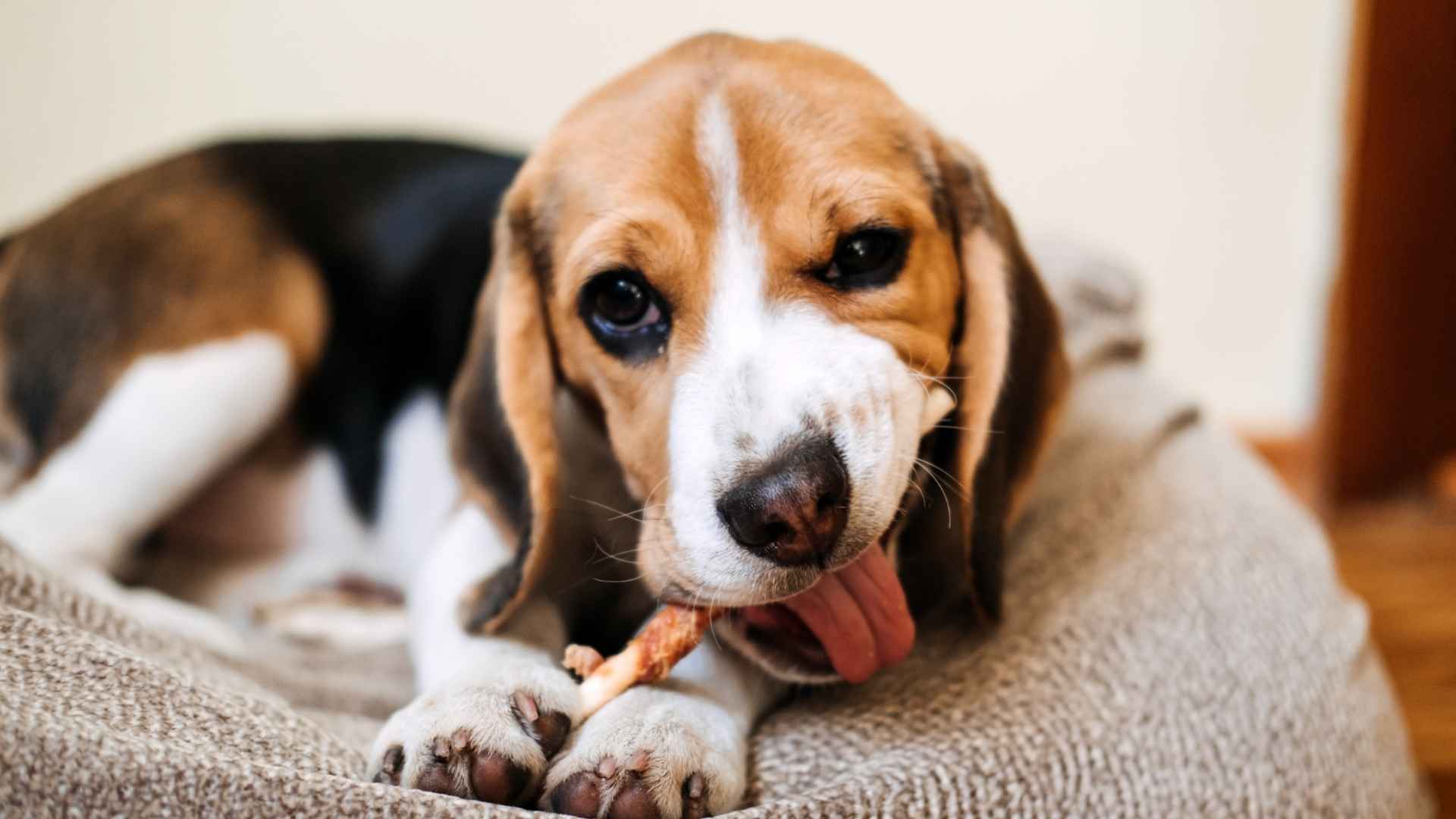Some dogs don’t just love food; they’ll eat anything they can get their paws on. From actual meals to random non-food items, their hunger can lead to some wild and risky choices.
This article covers the dog breeds most likely to act like they’ve got bottomless stomachs. Whether it’s a Beagle tracking down snacks, a Pug begging for more, or a Labrador chewing something they shouldn’t, these canines need a bit more watch when it comes to eating habits.
We’ll walk you through why some dogs eat more than others, how it links to their breed traits, and what you can do to prevent things like weight gain, upset stomachs, or worse: choking or poisoning.
Dog Breeds That Will Eat Anything
1. Beagle

First up, we have Beagles. These dogs don’t just eat anything; they’re also great at finding it. That’s because they belong to the hound group, and like all hounds, they love to hunt, follow scents, and tend to wander off when something catches their nose.
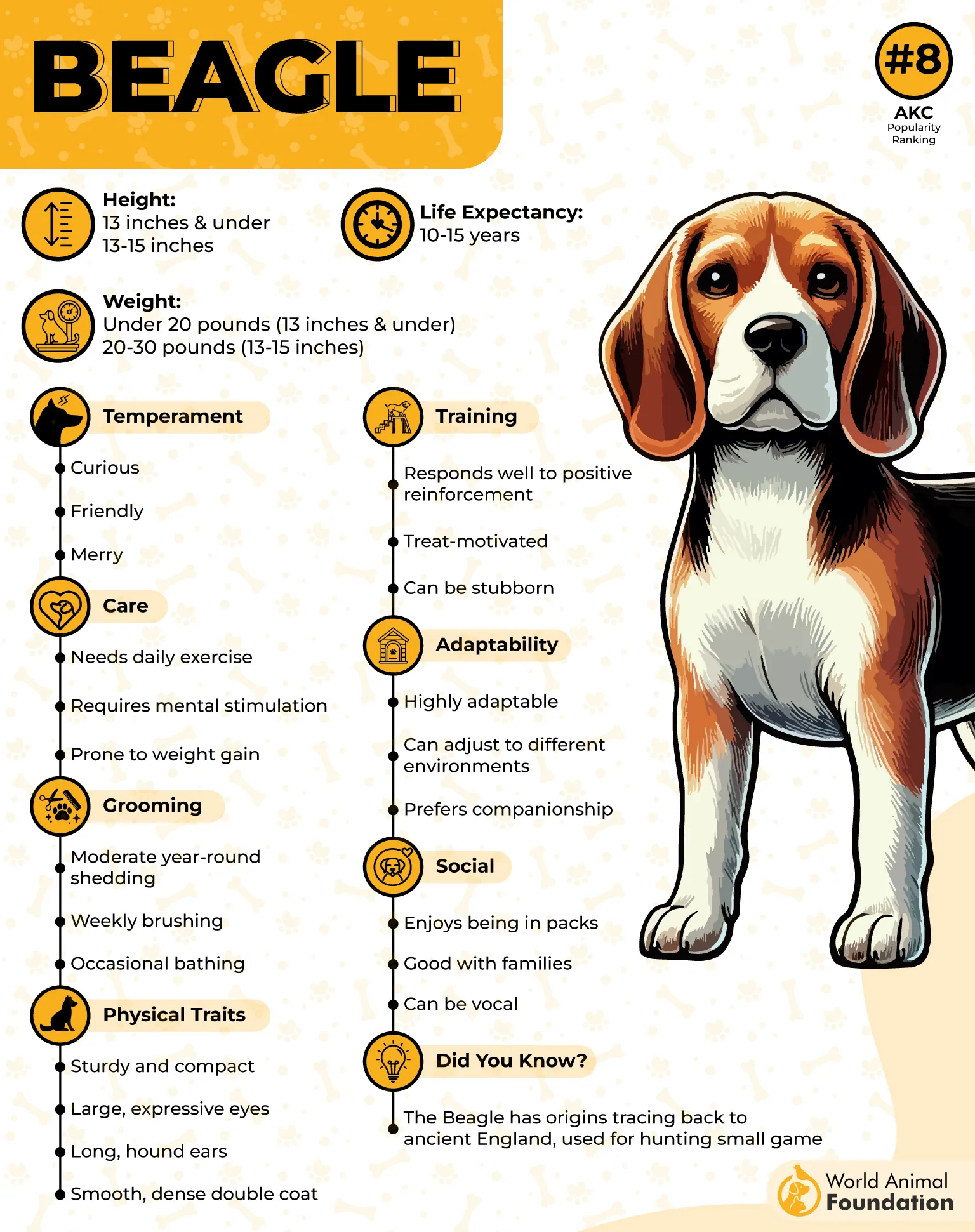
They often get so caught up in these scent-tracking adventures that they can wander too far and ignore your calls. That’s why it’s important to keep an eye on where you let them roam. You’ll also need to make sure food items in that space are out of their reach, because if they smell it, they’ll likely go for it.
PetMD recommends that their playing area be fenced, especially when they’re still puppies. At that stage, they’re not fully trained and can get easily distracted. Regular, reward-based training helps a lot.
And since Beagles are super food-motivated, using treats during training can be very effective. Just remember, they’re also prone to obesity, so you’ll need to keep that food-love in check with a proper balance.
2. Labrador Retriever

While this breed has countless traits that make it popular, from being a great family dog to serving in military, rescue, and guide roles, (we’d still miss a few of its titles no matter how long the list; so let’s move on) today, we’re focusing on one specific trait: its love for food.
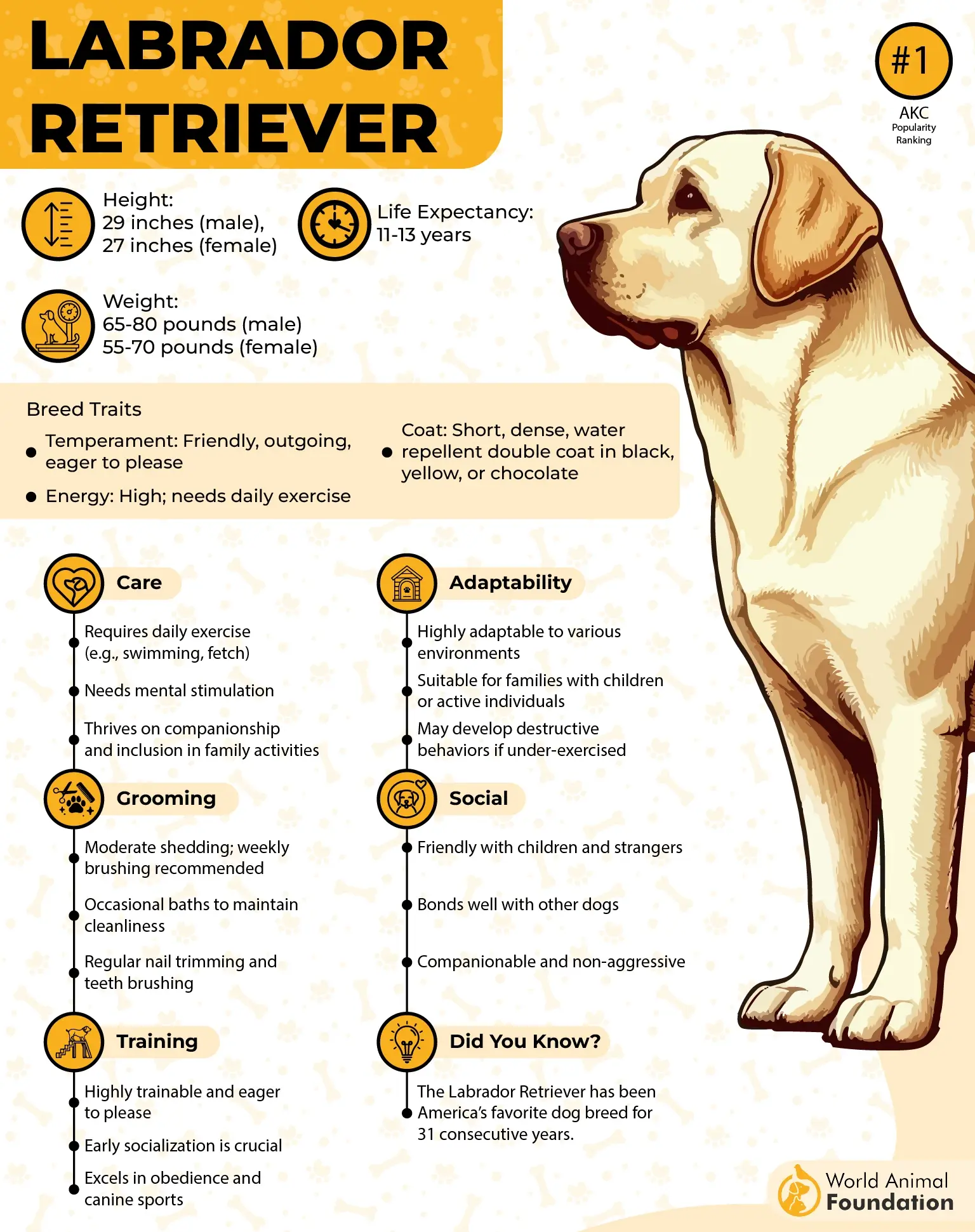
Labradors are famously food-driven and will eat almost anything they can get their paws on. This isn’t just about behavior; Biocompare asserts that some Labs have a gene mutation that makes them feel hungrier and more focused on finding food. That’s why owners need to be extra careful when it comes to managing their diet.
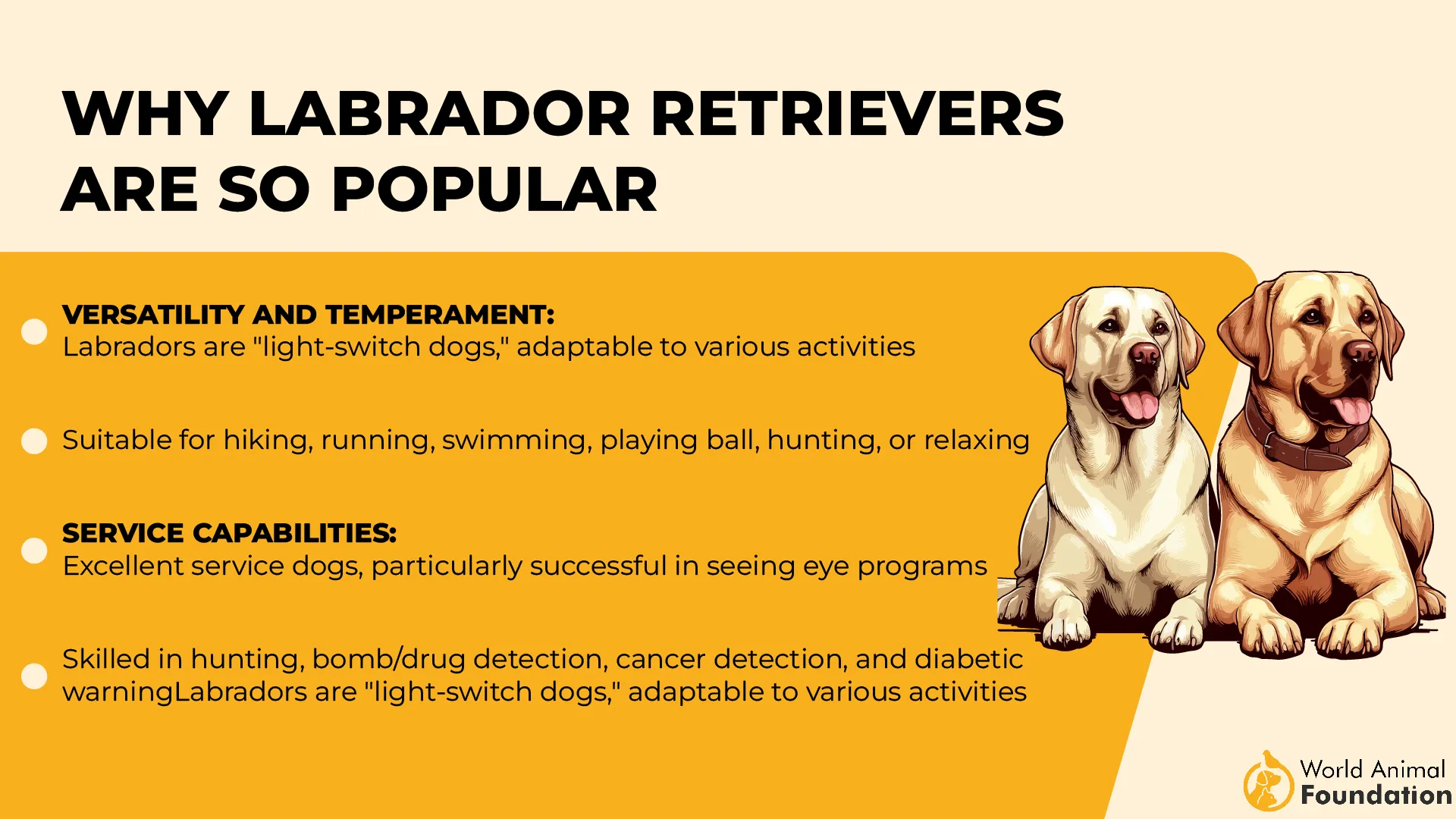
To keep your lab away from health problems, you need to use secure trash bins, avoid giving them table scraps, ensure any sort of toxic substances are out of their reach, and follow a proper feeding schedule. Regular weight checks and vet visits are also key to catching any signs of obesity early and keeping their health on track.
3. Golden Retriever
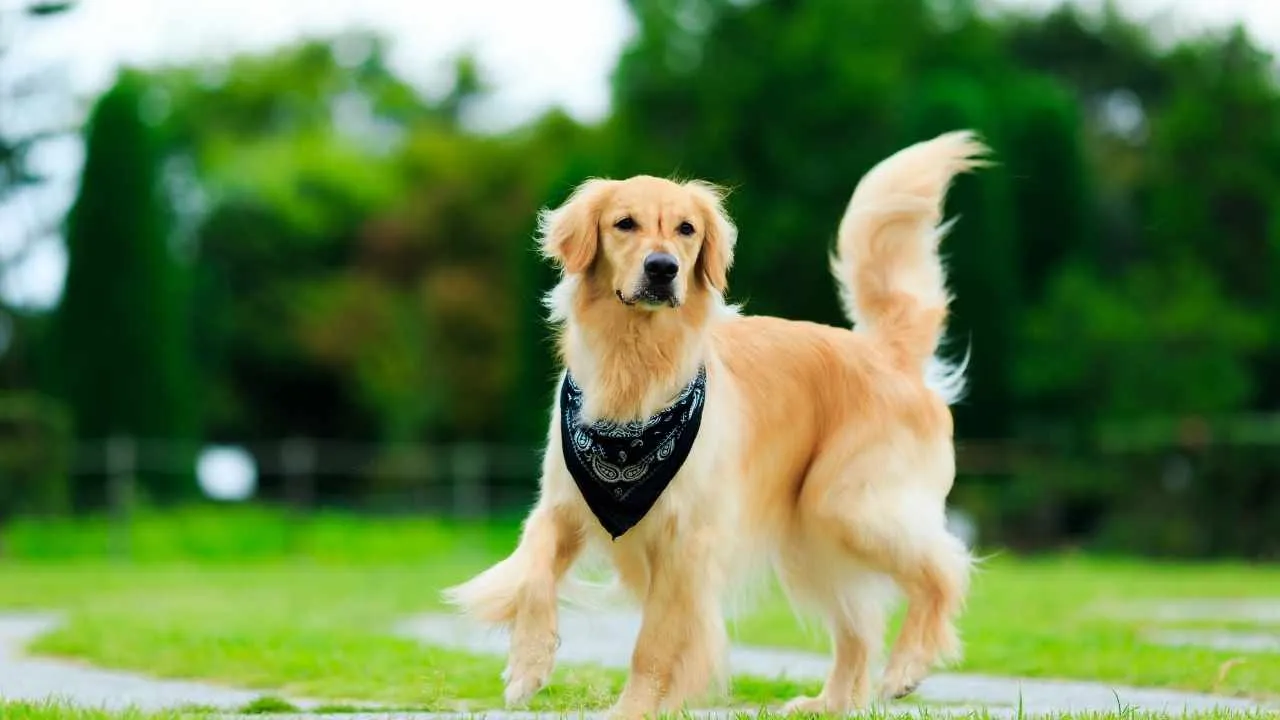
Golden Retrievers are well-known for their love of food; in fact, pretty much anything they can get their mouth on. Their friendly nature often leads them to sneak bites of human food, acting like little cleanup crews. But their habit of chewing or trying to eat non-food items can be risky, so it’s important to keep your home clear of small items that might be accidentally ingested.
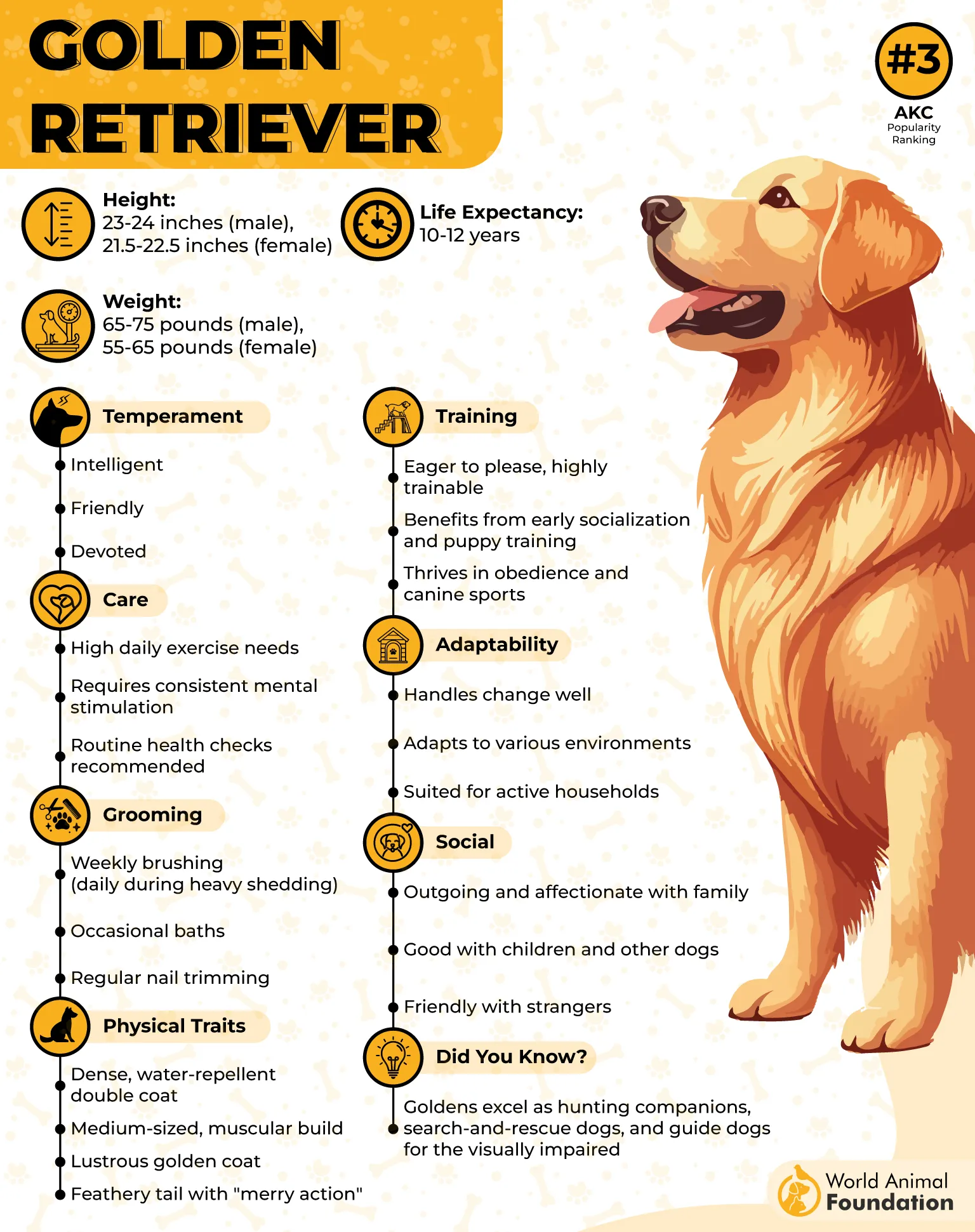
Providing a well-balanced diet and keeping them active both mentally and physically helps manage their constant interest in food. Since Goldens can gain weight easily, it’s important to keep an eye on their portions and avoid overfeeding.
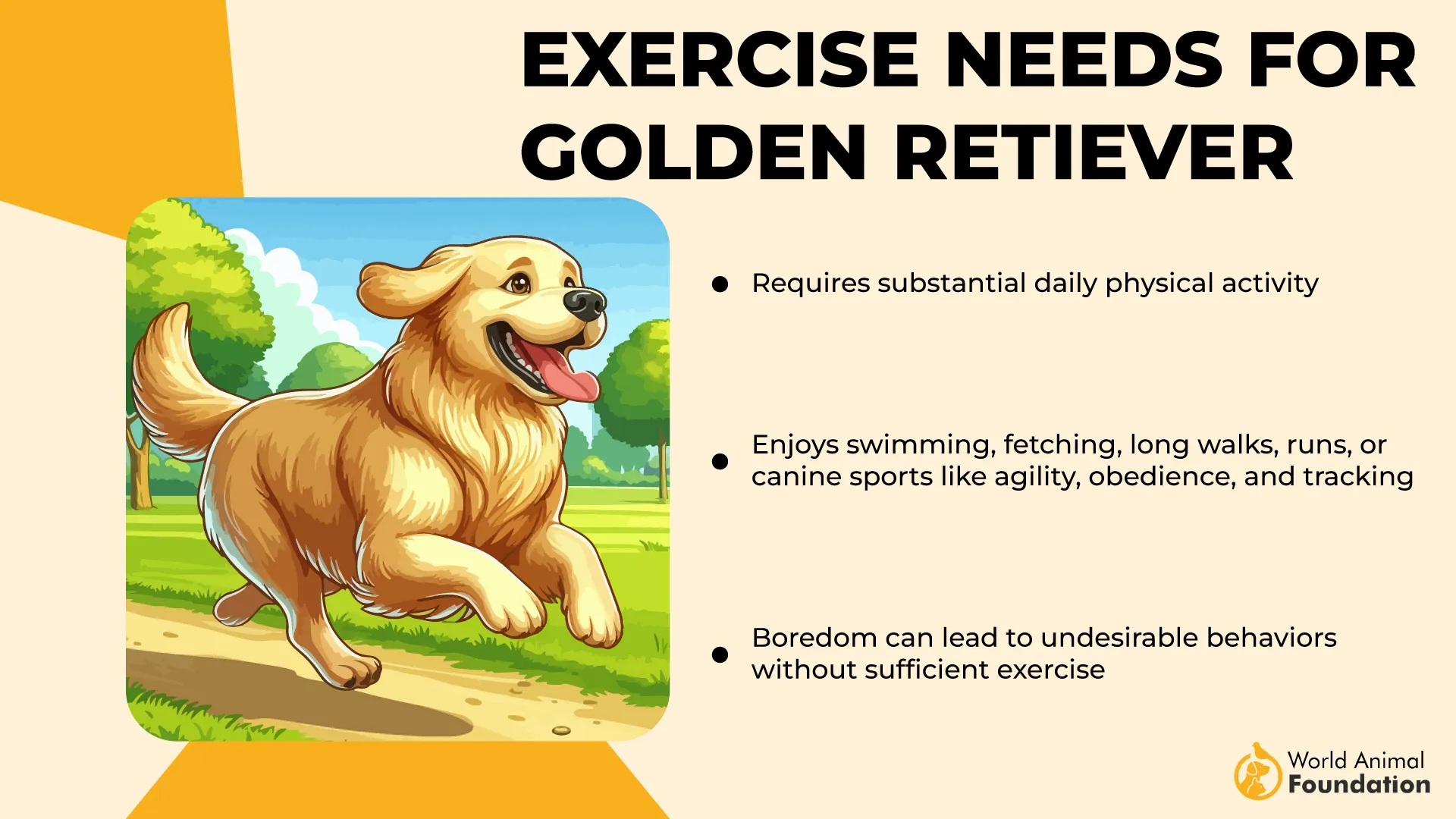
When they’re still growing, large-breed puppy food is the best choice. It supports steady growth and helps lower the chances of developing hip or joint problems as they get older.
4. Dachshund
Dachshunds have a hunting background that makes them explore and sniff out anything that smells interesting, which often means trying to eat it too. That’s why it’s important for owners to keep an eye on what’s around and make sure they’re not getting into things they shouldn’t.
These dogs are known for always being hungry. Their strong sense of smell and food-driven behavior can make them act like they’re ready to eat all the time. It’s part of what they were bred for: tracking and chasing prey.
Since they’re so food-focused, it’s easy for them to gain weight. And since Dachshunds are prone to back problems, keeping their diet in check is a must to avoid putting extra stress on their spine.
5. Bulldog
Bulldogs, including both English and French types, are known for loving their food. They’ll often eat as much as they’re given, which makes them prone to overeating. Without portion control and a proper diet, they can easily gain weight.
How often a Bulldog should eat depends on things like age, activity level, health, and the kind of food they’re eating. Just like human babies, Frenchie puppies need to eat more often than adult dogs. But that doesn’t last forever.
During the early puppy stage (around 8 weeks to 5 months), they grow quickly and burn a lot of energy. At this age, three small meals a day usually work best. Around 5 to 6 months, you can slowly shift them to two meals a day.
As they grow into adults, many Frenchies do well with just one main meal daily, especially if they tend to gain weight or are picky eaters. Feeding them in the late afternoon or evening often works well for digestion and weight control.
6. Pug
These little charmers have a voracious appetite and won’t think twice about begging for more food even when they’ve already had plenty. Give them the chance, and they’ll happily clean out their bowl and yours, too.
Due to their flat faces and compact bodies, carrying extra weight can be risky for Pugs and can cause difficulty breathing. That’s why portion control and a proper diet are necessary. It’s not just about how much they eat, but what’s in their food. If it’s packed with fillers and low on nutrients, your pug is probably going to stay hungry no matter how full the bowl looks.
To keep things balanced, make mealtime about quality, not just quantity. And for all that curiosity and energy they bring? Swap out extra treats with puzzle toys or games. It keeps their brain busy and helps them stay out of the snack cupboard!
7. St. Bernard
St. Bernards are heavy eaters, typically needing 4 to 8 cups of dry food a day. Splitting this into two meals helps lower the risk of bloat, which is common in giant breeds. Their food intake depends on factors like age, size, and activity level, especially during the puppy stage when they grow rapidly and stay constantly hungry.
Due to their size and fast growth, they need a diet rich in protein and moderate in fat, with real meat as the first ingredient, as indicated by WebMD. Grain-free options are often recommended to support their joints and digestion. Plenty of fresh water is also a must, as they tend to drink a lot and drool just as much.
Though they look like they’d need a huge yard, St. Bernards adapt surprisingly well to apartment life, as long as they get moderate daily exercise. Their calm nature, paired with regular walks and playtime, helps keep them happy and healthy.
8. Rottweiler
Rottweilers have a strong appetite, and many will act like they’re always ready for another meal. This behavior ties back to their natural instincts and physical build. As a working breed, they have plenty of energy and often respond quickly to food rewards, which can make them seem constantly hungry.
Their protective nature can also influence how they eat. Some Rottweilers may guard their food, especially around other pets, leading them to eat faster or consume more than they actually need. Without proper boundaries, this can quickly turn into a habit.
Not all Rottweilers have the same metabolism; some stay lean and active, while others gain weight easily on the same amount of food. On top of that, when they’re bored, suffering from anxiety, or under-stimulated, they may start eating simply out of habit or stress. To manage this, it’s important to control portions, use slow feeders, and give them regular physical and mental activity.
9. Great Dane
Originally bred to hunt wild boars, Great Danes were built for power and stamina. That kind of physical demand meant they needed high-calorie diets to keep up.
Even today, although they’re more couch potatoes than boar hunters, their large frames and fast growth require a nutrient-dense diet, especially during puppyhood.
What catches many owners off guard is that despite their calm vibe at home, Danes burn a lot of energy just moving around due to their size. They’re not hyper, but their body demands fuel. That’s why giving them the right amount and type of food is key. Overfeeding can lead to obesity, while underfeeding can affect bones, muscles, and overall health.
Conclusion
When it comes to food, some dog breeds simply don’t have an off switch, and they seem to forget to stop eating, but it’s not just about being greedy. Their instincts, body types, and breed history all play a role in why they act like walking vacuum cleaners.
It’s crucial for owners to look beyond the puppy-dog eyes and set smart boundaries. The right diet, portion control, and feeding schedule can go a long way in keeping these food-obsessed pups healthy. Throw in a little mental stimulation, daily activity, and some patience, and you’ll have a happy dog that eats well without overdoing it.


